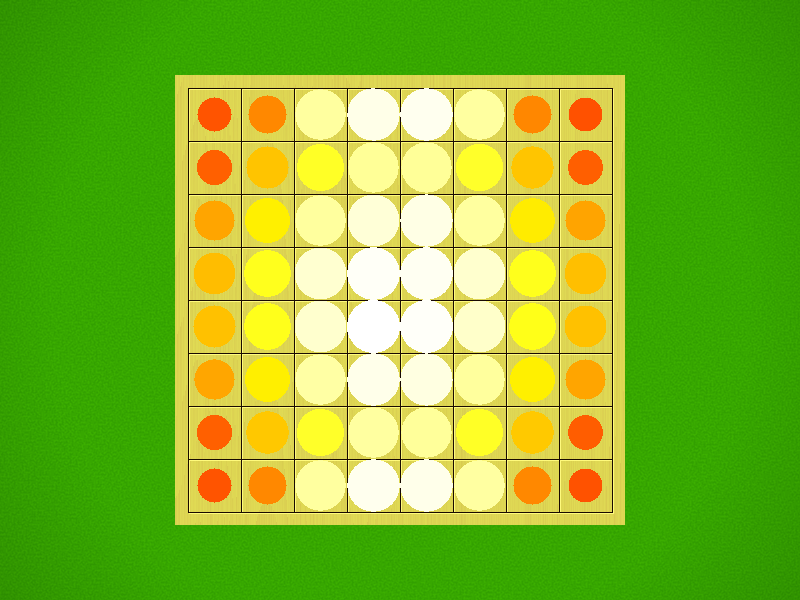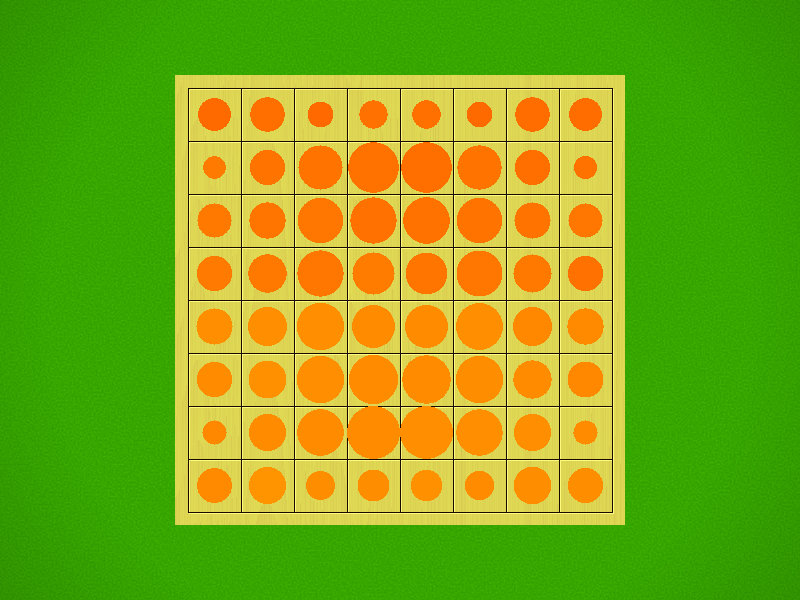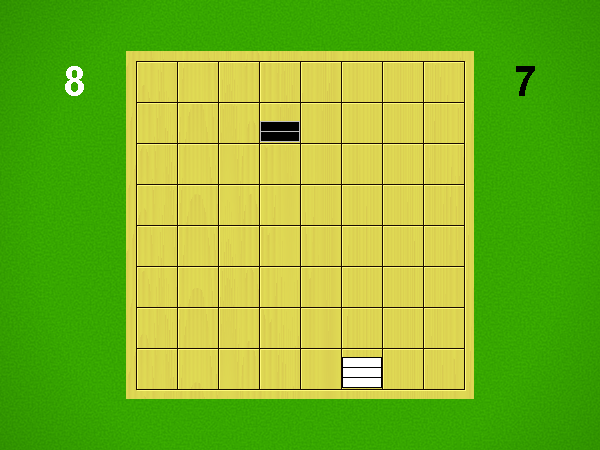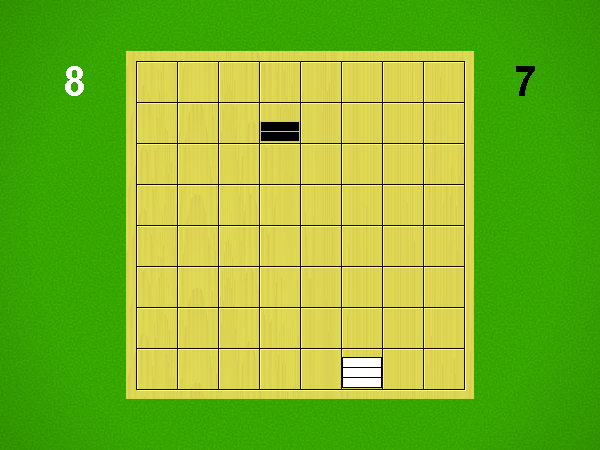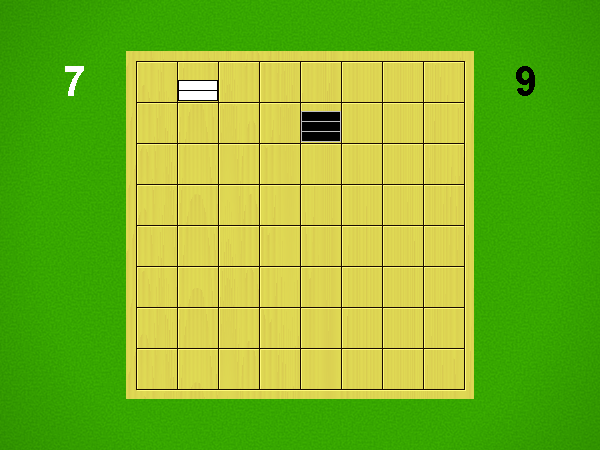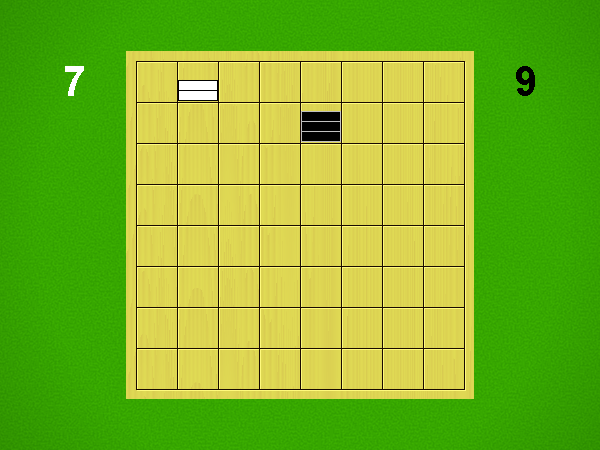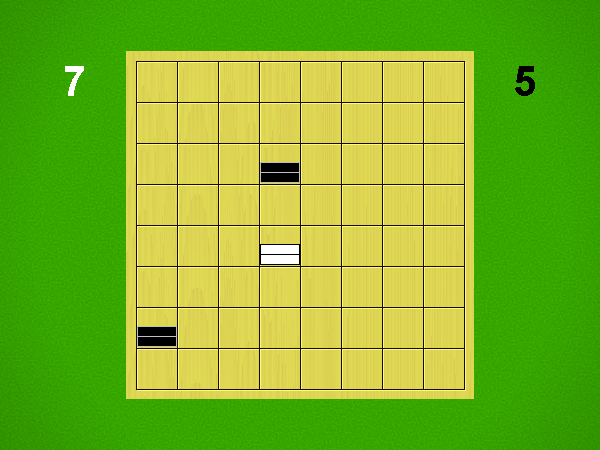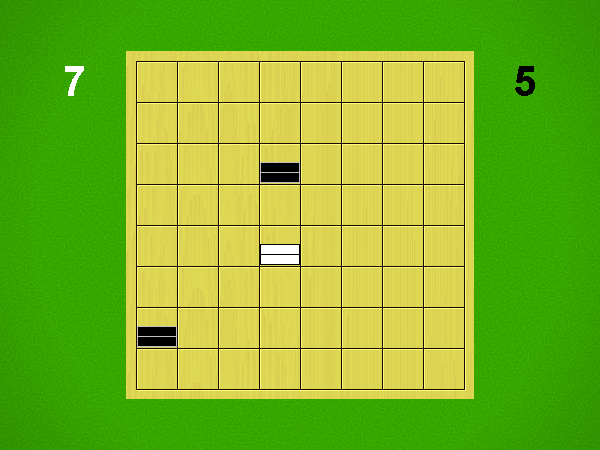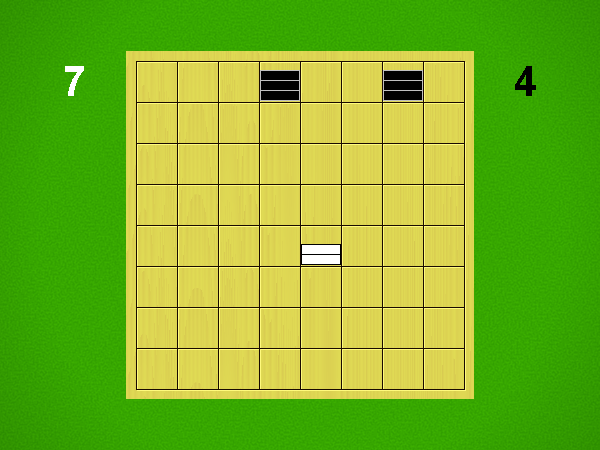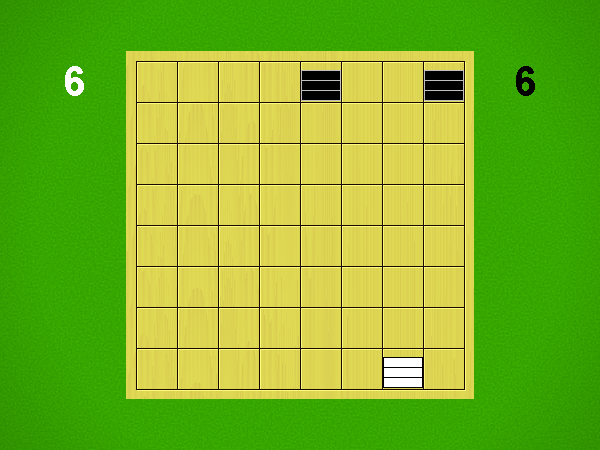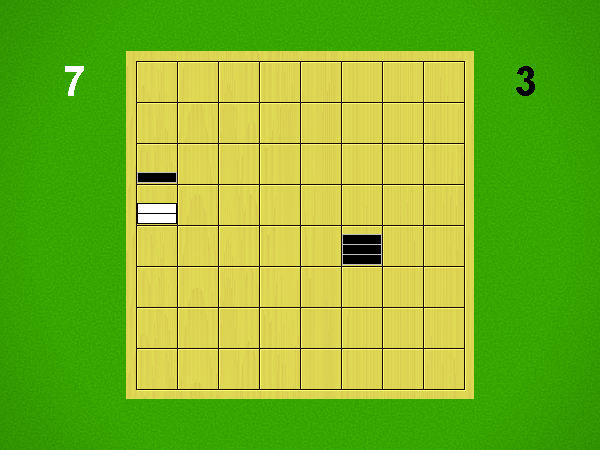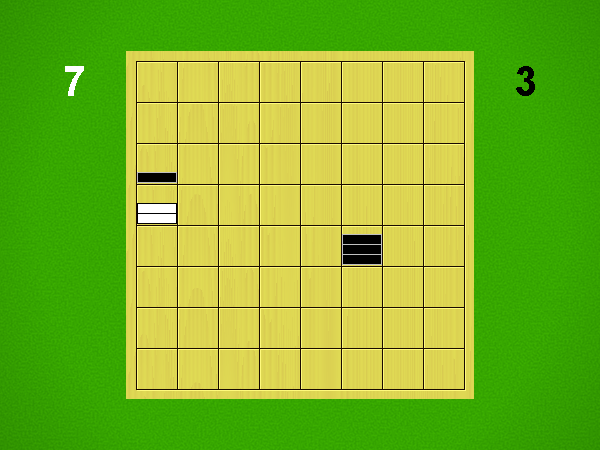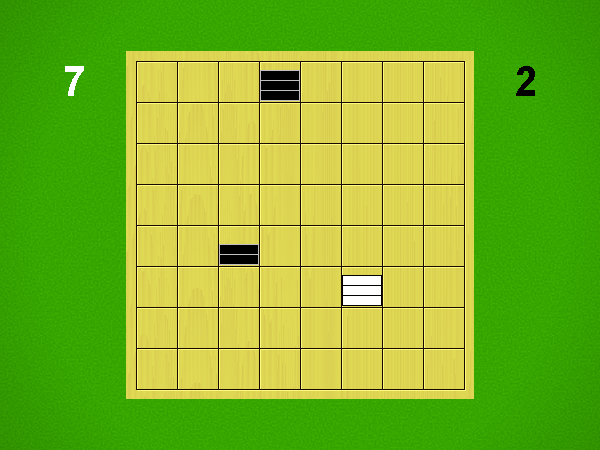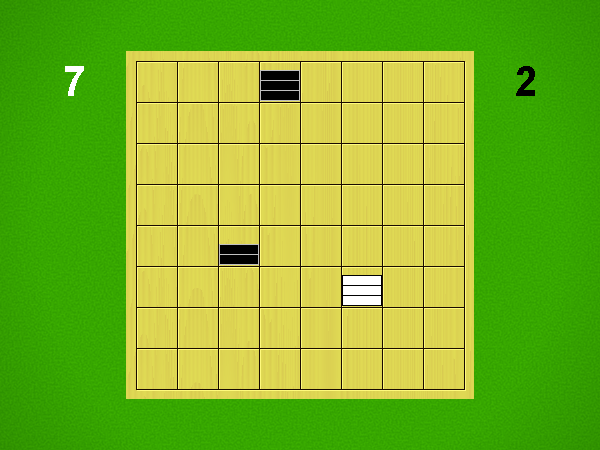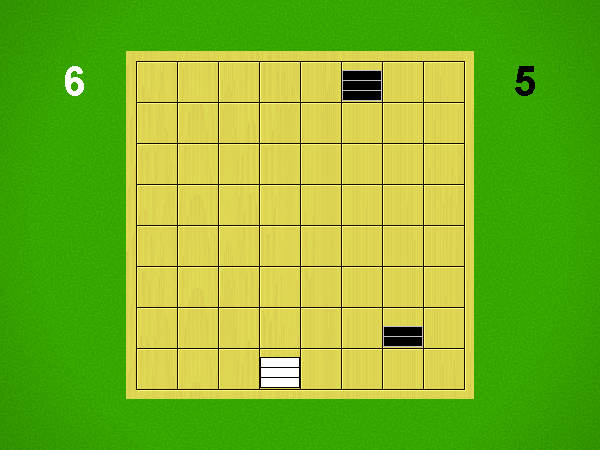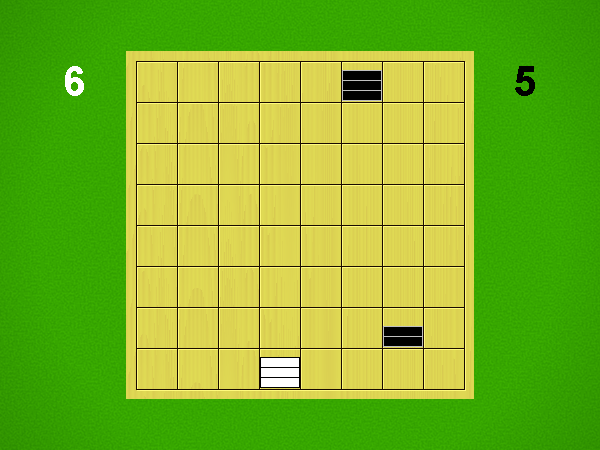| User | Rating | Comment |
|---|
| Ty Bomba | 10 | I account this the best game I've ever designed. Some, when they first see it, believe it's simplistic and has an inescapable first-move advantage, such as occurs in other symmetric games like "Checkers" or "Tic Tack Toe." That's not the case, though, because, though play stops when only one player has any pieces remaining on the board, that doesn't decide who won. That's determined by comparing the number of pieces both players got off the far side of the board from their own staring positions prior to the game ending. Hence, to win, you have to use a changing combination of moving (zooming) and shooting (booming); you can't win by only done one of them. Hence the game's title "Boom AND Zoom." |
| SageClock | 7.5 | Pretty good. Simple and elegant ruleset, and more to it than it first appears. My rating could go up with more plays also. Can be tried with stackable counters and a chessboard, but if you like it I recommend picking up a copy to support these types of games, as these tend not to get as much attention as other games and can use your money a lot more than the new hotness. |
| Lord_Prussian | 7 | Play with Pyramid Arcade |
| dslimak | 8 | |
| Table43 | 5.6 | T-2, R-1, A-1 |
| mrraow | 8 | Most impressive - 4 pieces a side, but so many options each move. Like Lines of Action, it's not at always clear that capturing the enemy pieces is an advantage, this game is all about tempo. |
| blinks | 4 | |
| Mashpotassium | 8 | Rating based on 2 players. There's an interesting push-and-pull dynamic within its short playing time and it's incredibly easy to learn. One poor move can easily cascade into a sequence that can cost you the game. |
| M1Tanker | 8 | Acquired 7 DEC 2019. For those who haven’t given up hope for light but meaty fun games, Boom & Zoom deserves a look. We found it provided a ton of fun and thinking. Simply can’t recommend this one enough for not just war gamers but SIMPLY ALL GAMERS. As well it was surprisingly an awesome solitaire game. |
| yelmelnobrainer | 6 | |
| schranerd | 6 | |
| wd354 | 8 | Somewhere b/t checkers and chess, though I've yet to play a live opponent so I'm not sure where it falls. I really like the wooden blocks. |
| dlow | 6 | More depth than I though at first. Want to explore this some more to see if the interest persists. |
| rseater | 7 | A neat and fast-paced abstract that feels somewhat like a wargame. At first, it seems like the second player cannot ever win. But after a few plays, it becomes clear that they have a good chance if they are very aggressive and get into a lot of fights. There is still somewhat of a first player advantage, but it's not nearly as large as it first appears. minor tweak: second player wins tie games |
| melau | 1 | I dont like if Designers rate their own game a ten. The rating is then adulterated. |
| mrkvm | 6 | |
| js3b | 7 | I was playing to eliminate my opponent, then realized I can't do that if they are in the lead with pieces off-the-board, since the game ends immediately when only one player has pieces. There are definitely a couple levels here. I do think the game board should have had printed areas for the eliminated vs. scoring pieces. |
| HannibalUltor | 3 | |
| nycavri | 7 | |
| Daegil | 8 | |
| fortheloveofdice | 8 | PNP |
| Hattusilis_III | 6.5 | |
| nomisofsiman | 7 | |
| athom6227 | 8 | |
| Bonejar | 3 | Ty Bomba thinks every one of his games is a 10. I'm giving this an honest 3, |
| dbucak | 8 | |
| Andy Mesa | 7 | |
| glanfam | 3 | |
| TomekBG | 8 | Fast, clever and deceivingly simple. My 8 year old daughter is winning most of the time. |
| lsamadi | N/A | Mar 2018 - PnP from Wargamevault Mar 2018 - made a 3D printed set [ImageID=4062445] |
| qswanger | N/A | This game looks like it could be up my alley but I need to see the rules of play. Can anyone point me to them? Thanks. |
| jmdsplotter | 5.5 | |



